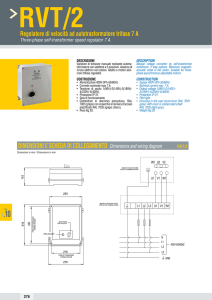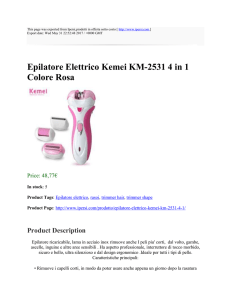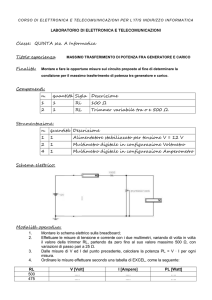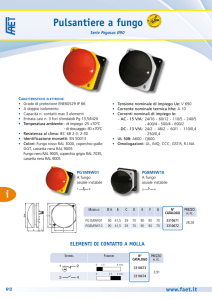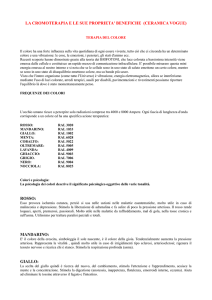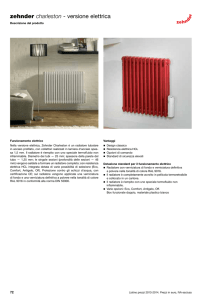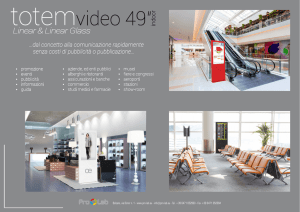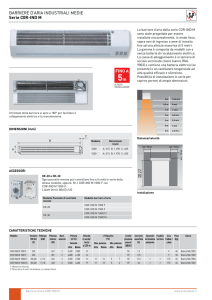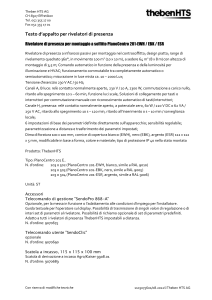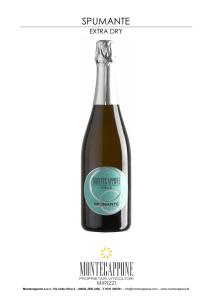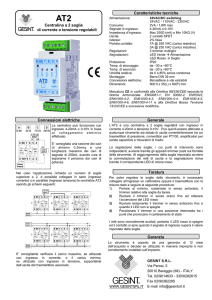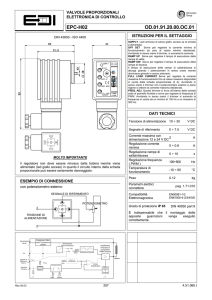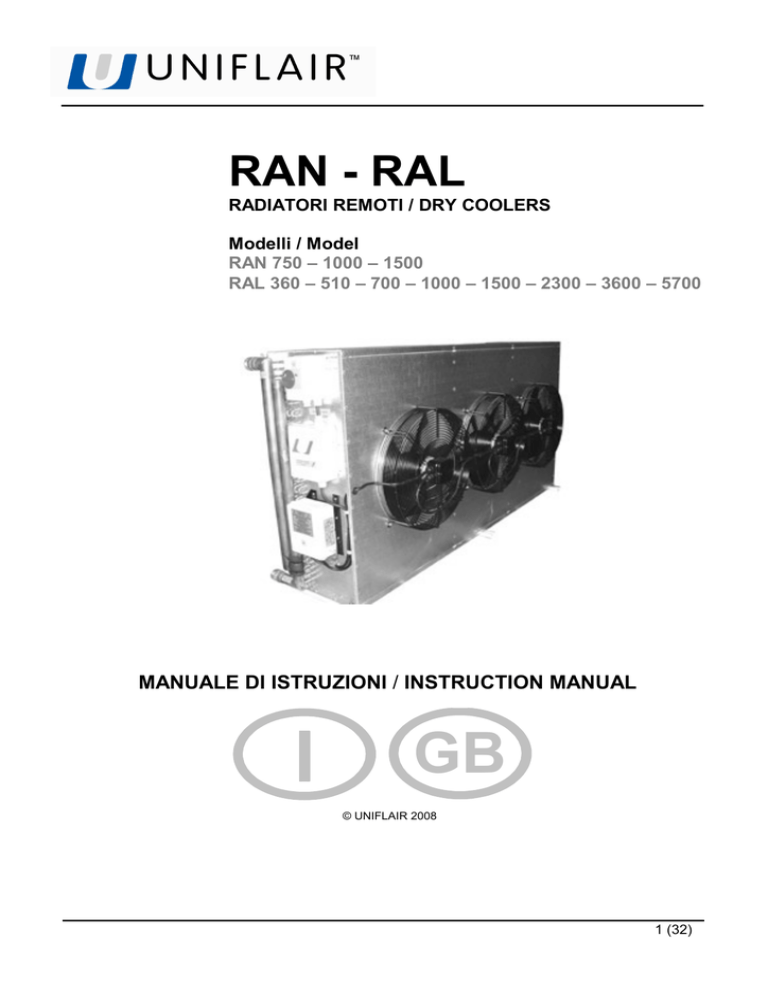
RAN - RAL
RADIATORI REMOTI / DRY COOLERS
Modelli / Model
RAN 750 – 1000 – 1500
RAL 360 – 510 – 700 – 1000 – 1500 – 2300 – 3600 – 5700
MANUALE DI ISTRUZIONI / INSTRUCTION MANUAL
GB
© UNIFLAIR 2008
1 (32)
MANUALE DI ISTRUZIONI / INSTRUCTION MANUAL
RADIATORI REMOTI / DRY COOLERS
IT
EN
Versione / Release: 1.1
Data / Date: Luglio 2008 / July 2008
Alcune caratteristiche delle unità in versione speciale potrebbero discostarsi da quelle descritte nel presente manuale.
UNIFLAIR SpA persegue una politica di costante innovazione tecnologica riservandosi il diritto di variare senza preavviso le
caratteristiche qui riportate.
The following general characteristics are relevant to standard units designed according to the available options found on the units price
list.
UNIFLAIR SpA policy is one of continuous technological innovation. The Company therefore reserves the right to amend any data
herein without prior notice.
Smaltimento: il prodotto è composto da parti in metallo e da parti in plastica.
In riferimento alla Direttiva 2002/96/CE del Parlamento Europeo e del Consiglio del 27
gennaio 2003 e alle relative normative nazionali di attuazione, Vi informiamo che:
• Sussiste l’obbligo di non smaltire i RAEE come rifiuti urbani e di effettuare, per
detti rifiuti, una raccolta separata;
• Per lo smaltimento vanno utilizzati i sistemi di raccolta pubblici o privati previsti
dalle leggi locali. E’ inoltre possibile riconsegnare al distributore l’apparecchiatura
a fine vita in caso di acquisto di una nuova.
• Questa apparecchiatura può contenere sostanze pericolose: un uso improprio o
uno smaltimento non corretto potrebbe avere effetti negativi sulla salute umana e
sull’ambiente;
• Il simbolo (contenitore di spazzatura su ruote barrato) riportato sul prodotto o sulla
confezione e sul foglio istruzioni indica che l’apparecchiatura è stata immessa sul
mercato dopo il 13 Agosto 2005 e che deve essere oggetto di raccolta separata;
• In caso di smaltimento abusivo dei rifiuti elettrici ed elettronici sono previste
sanzioni stabilite dalle vigenti normative locali in materia di smaltimento.
Disposal: the product is made up of metal parts and plastic parts.
In reference to European Union directive 2002/96/EC issued on 27 January 2003 and
the related national legislation, please note that:
• WEEE cannot be disposed of as municipal waste and such waste must be
collected and disposed of separately;
• The public or private waste collection systems defined by local legislation must
be used. In addition, the equipment can be returned to the distributor at the end
of its working life when buying new equipment.
• The equipment may contain hazardous substances: the improper use or
incorrect disposal of such may have negative effects on human health and on the
environment;
• The symbol (crossed-out wheeled bin) shown on the product or on the packaging
and on the instruction sheet indicates that the equipment has been introduced
onto the market after 13 August 2005 and that it must be desposed of separately;
• In the event of illegal disposal of electrical waste, the penalties are specified by
local disposal legislation.
RAN-RAL - Rev 1.1
25-07-08
IT - EN
2
MANUALE DI ISTRUZIONI / INSTRUCTION MANUAL
RADIATORI REMOTI / DRY COOLERS
Indice
Simbologia
Norme di sicurezza
Descrizione generale
Descrizione e destinazione d’uso
Targa d'identificazione
Trasporto e movimentazione
Dimensioni e pesi
Installazione
Spazio operativo
Dimensioni delle connessioni idrauliche
Collegamenti idraulici
Utilizzo di glicole etilenico
Dimensionamento del vaso di espansione
Capacità del circuito idraulico
Collegamenti elettrici
Cavi d'alimentazione - protezioni
Avviamento
Organi di regolazione - taratura
Dati tecnici
Manutenzione
Pagina
4
4
5
6
6
7
7
7
8
8
9
9
10
10
11
11
11
11
16
17
Index
Symbols used
Safety Instructions
General Description
Description and use
Nameplate
Transport - Positioning On Site
Dimensions And Weight
Installation
Working Space
Size of hydraulic connections
Hydraulic Connections
Use of ethylene glycol
Guide to the sizing of the expansion tank
Capacity of water circuit
Electrical Connections
Power Supply Cables - Protection
Start-Up
Control Devices - Adjustment
Technical data
Maintenance
RAN-RAL - Rev 1.1
25-07-08
IT - EN
Page
18
18
19
20
20
21
21
21
22
22
23
23
24
24
25
25
25
25
30
31
3 (32)
MANUALE DI ISTRUZIONI / INSTRUCTION MANUAL
RADIATORI REMOTI / DRY COOLERS
SIMBOLOGIA
SIMBOLO
SIGNIFICATO
PERICOLO GENERICO
AVVERTENZE IMPORTANTI
SIMBOLO
SIGNIFICATO
ORGANI IN MOVIMENTO
SUFERFICI TAGLIENTI
COMPONENTI
IN
TENSIONE,
PERICOLO ELETTRICO
NORME DI SICUREZZA
• Prima di qualsiasi intervento leggere attentamente il libretto d'istruzioni
• Il radiatore è caricato in fabbrica con azoto a 2 bar(modelli 2300…5700). Prima di rimuovere i tappi sugli
attacchi in fase di installazione, scaricare l’azoto per mezzo della valvola sul collettore.
• Il radiatore lavora in pressione: la manomissione dei raccordi o delle tubazioni può provocare fuoriuscite di
liquido compresso.
• INSTALLARE IL RADIATORE IN POSIZIONE INACCESSIBILE A PERSONE NON AUTORIZZATE: le alette
dello scambiatore di calore sono in lamiera d'alluminio di piccolo spessore e possono tagliare in caso di
contatto involontario.
• Il radiatore è in tensione e contiene parti rotanti: prima di intervenire su qualsiasi parte elettrica oppure
sul ventilatore/i aprire il sezionatore (portare la manopola in posizione “O”)
• Tutte le operazioni di servizio o manutenzione devono essere effettuate con macchina ferma e
devono essere condotte da personale esperto e qualificato.
• In caso d'incendio l’acqua e le altre sostanze conduttrici non devono essere usate per lo spegnimento in
prossimità delle parti elettriche sotto tensione. Tale divieto dev’essere esposto nel luogo d'installazione della
macchina, mediante avvisi.
Assicurarsi che la tensione d'alimentazione corrisponda a quella riportata nei valori di targa.
RAN-RAL - Rev 1.1
25-07-08
IT - EN
4 (32)
MANUALE DI ISTRUZIONI / INSTRUCTION MANUAL
RADIATORI REMOTI / DRY COOLERS
DESCRIZIONE GENERALE
DISPOSIZIONE FLUSSO D’ARIA:
ORIZZONTALE
VERTICALE
5
1
1
6
8
8
7
4
6
4
5
2
7
3
Fig.1. (*)
Fig.2. (*)
1
2
3
4
5
6
7
8
N.B.:
(*) :
Ventilatore
Staffe di supporto
Gambe di supporto
Connessioni idrauliche
Sezionatore
Regolatore di velocità
Targa d'identificazione
Sonda temp. entrata acqua
Il numero e la disposizione dei ventilatori varia con il modello del radiatore
Figure riferite ai modelli 2300…5700
RAN-RAL - Rev 1.1
25-07-08
IT - EN
5 (32)
MANUALE DI ISTRUZIONI / INSTRUCTION MANUAL
RADIATORI REMOTI / DRY COOLERS
DESCRIZIONE E DESTINAZIONE D’USO
Radiatori remoti con ventilatore assiale idonei ad installazione all’aperto, completamente assemblati e collaudati
in fabbrica. I radiatori possono essere installati sia in posizione verticale (flusso aria orizzontale) oppure in
posizione orizzontale (flusso aria verticale). Le unità sono dotate di controllo opzionale della velocità dei
ventilatori del tipo termostatico ON/OFF oppure modulante a taglio di fase.
Carrozzeria: i radiatori sono realizzati con struttura autoportante in alluminio goffrato con elevatissima
resistenza alla corrosione.
Ventilatori: di tipo assiale, il motore elettrico è del tipo a rotore esterno con protezione termica incorporata, IP54
classe “F”, particolarmente adatto alla regolazione di velocità con sistemi a taglio di fase. La griglia di sicurezza
a protezione del ventilatore è conforme alle vigenti norme di sicurezza.
Batteria: ad ampia superficie frontale per un’ottimale distribuzione dell’aria. É realizzata con tubi in rame
espansi meccanicamente su alette d’alluminio per la massima efficienza di scambio.
Collegamenti idraulici: le connessioni sono di tipo GAS maschio disposte su un lato dell’unità per un
collegamento rapido e sicuro.
Impianto elettrico: interruttore sezionatore generale con grado di protezione IP54, regolatore di velocità o
termostato controllo unità (opzionali) precablati.
TARGA D'IDENTIFICAZIONE
La targhetta d'identificazione, applicata sul radiatore, riporta le seguenti indicazioni:
• Modello della macchina;
• Numero di matricola;
• Anno di costruzione;
• Corrente e potenza assorbite;
• Valori di taratura standard.
DIMENSIONI E PESI
DIMENSIONI: vedi disegni allegati DIUI...
Modello
RAL
0360
RAL
0510
RAL
0700
RAN
0750
RA**
1000
RA**
1500
RAL
2300
RAL
3600
RAL
5700
Peso netto kg
55,0
58,0
94,0
95,0
138,0
180,0
210,0
283,0
391,0
RAN-RAL - Rev 1.1
25-07-08
IT - EN
6 (32)
MANUALE DI ISTRUZIONI / INSTRUCTION MANUAL
RADIATORI REMOTI / DRY COOLERS
TRASPORTO E MOVIMENTAZIONE
Il radiatore ha lasciato la fabbrica in perfetto stato; al momento della consegna; controllarne l’integrità e
notificare subito per iscritto al trasportatore ogni danno che possa essere attribuito ad un trasporto rude.
Durante il trasporto e il tiro in sito:
• non reclinare o capovolgere il radiatore.
• prima di rimuovere l’imballo, trasportare il radiatore nel punto più vicino al luogo d'installazione per mezzo di
un transpallet oppure di un carrello trasportatore stabile, assicurando l’unita’ per evitarne il ribaltamento.
• rimuovere l’imballo prestando attenzione a non danneggiare l’unità.
La simbologia applicata sull’imballo è conforme alla norma ISO7000; il significato dei segni grafici è riportato in
tabella.
SEGNO GRAFICO SIGNIFICATO
FRAGILE:
manipolare
precauzione.
con
TEME L’UMIDITÁ: indica che
l’imballaggio dev’essere tenuto in
luogo asciutto.
CENTRO DI GRAVITÁ: indica il
centro di gravità dell’imballaggio di
spedizione.
TEME IL CALORE: indica che
l’imballaggio di spedizione deve
essere tenuto distante da fonti di
calore.
SEGNO GRAFICO SIGNIFICATO
ALTO: indica la posizione
corretta
dell’imballaggio
di
spedizione.
LIMITI DI TEMPERATURA:
indica i limiti di temperatura
entro i quali l’imballaggio
dev’essere
conservato
e
manipolato.
NON UTILIZZARE GANCI:
indica che sono proibiti i ganci
per
il
sollevamento
dell’imballaggio di spedizione.
NON
SOVRAPPORRE
gli
imballi.
INSTALLAZIONE
Porre il radiatore all’aperto evitando l’esposizione all’insolazione diretta.
Esso può essere installato:
• con flusso d’aria orizzontale per una migliore protezione (dalla neve o da oggetti provenienti dall’alto) e una
più facile manutenzione; con quest'assetto il radiatore necessita di protezione dal vento che potrebbe
interferire con il funzionamento del ventilatore;
• con flusso d’aria verticale; quest'assetto è consigliato per l’installazione in zone ventose o laddove il flusso
d’aria orizzontale sia ostruito ed è realizzabile per mezzo del kit gambe opzionale. Per le operazioni di
montaggio vedi lo schema allegato al kit gambe.
Poggiare il radiatore su una superficie solida e piana.
Fissare il radiatore utilizzando gli appositi fori sulle staffe di base (flusso d’aria orizzontale) oppure sulle
estremità inferiori delle gambe (flusso d’aria verticale).
RAN-RAL - Rev 1.1
25-07-08
IT - EN
7 (32)
MANUALE DI ISTRUZIONI / INSTRUCTION MANUAL
RADIATORI REMOTI / DRY COOLERS
SPAZIO OPERATIVO
Rispettare le distanze minime indicate in fig. 3, necessarie per una libera circolazione dell’aria e per la
manutenzione dell’unità.
> 0,7 m
>4m
>4m
>1m
>1m
Fig. 3.a.: FLUSSO D’ARIA ORIZZONTALE
Fig. 3.b.: FLUSSO D’ARIA VERTICALE
INSTALLARE IL RADIATORE IN POSIZIONE INACCESSIBILE A PERSONE NON AUTORIZZATE:
L’alettatura dello scambiatore di calore è in lamiera d'alluminio spessa 0,1 mm ed è
potenzialmente tagliente in caso di violento contatto involontario.
NB: la caratteristica dei ventilatori non consente la canalizzazione dell’aria.
DIMENSIONI DELLE CONNESSIONI IDRAULICHE
Il
radiatore
è
provvisto
connessioni tipo GAS maschio.
di
attacchi tipo gas
Gli attacchi femmina devono
essere avvitati sulle estremità
(ingresso/uscita) intraponendo una
guarnizione.
NOTA: Il diametro delle linee
idrauliche (De) tra condizionatore e
radiatore remoto dev'essere scelto
in funzione della lunghezza delle
stesse.
1 ¼" maschio (0360-0510)
1 ½ " maschio (0700-0750)
2 " maschio (1000…2300)
3 " maschio (3600-5700)
De
Fig.4.
Fig.5.
RAN-RAL - Rev 1.1
25-07-08
IT - EN
8 (32)
MANUALE DI ISTRUZIONI / INSTRUCTION MANUAL
RADIATORI REMOTI / DRY COOLERS
COLLEGAMENTI IDRAULICI
Il radiatore è caricato in fabbrica con azoto chiuso con tappi (modelli 2300…5700).
PRIMA DI RIMUOVERE I TAPPI SUGLI ATTACCHI SCARICARE L’AZOTO PER MEZZO DELLA
VALVOLA A SPILLO SUL COLLETTORE D’ENTRATA.
A
A
A
A
D
E
B
B
E
1
C
2
3
4
Fig. 6.
1. Svitare il tappo (E) avvitato sull’attacco (A);
2. Rimuovere la guarnizione nera in gomma (D): questa guarnizione è utilizzata solamente per garantire la
tenuta del circuito precaricato con azoto;
3. Inserire una guarnizione (B) sull’attacco (A);
4. Avvitare il giunto femmina (C) sull’attacco (A).
Rispettare il corretto collegamento del radiatore
evitando di invertire l’ingresso con l’uscita
(vedi fig. 7).
OK
Fig. 7.a.
Fig. 7.b.
UTILIZZO DI GLICOLE ETILENICO:
In caso di utilizzo di miscele anticongelanti, alcuni dei dati tecnici della macchina riportati nelle tabelle (resa,
portata d’acqua, perdite di carico) subiscono alcune variazioni.
Di seguito sono indicati fattori di correzione per calcolare i dati alle diverse percentuali di glicole etilenico.
Percentuali di glicole etilenico
variazione della portata d’acqua (%)
5%
+2%
10%
+ 4.5 %
15%
+ 6.5 %
20%
+9%
25%
+ 11.5 %
30%
+ 14 %
variazione delle perdite di carico (%)
+7%
+ 14 %
+ 24 %
+ 33 %
+ 45 %
+ 57 %
Limiti operativi
Temperatura minima del fluido con macchina funzionante
Percentuale in peso di glicole etilenico
Temperatura di congelamento
5 °C
0%
0 °C
3 °C
10%
- 4 °C
0 °C
15%
- 7 °C
- 3 °C
20%
- 10 °C
- 6 °C
25%
- 13°C
- 10 °C
30%
- 17 °C
Attenzione: Nel caso di utilizzo di acqua senza glicol, occorre essere sicuri che la temperatura ambiente sia sempre
superiore a 0°C. Per evitare il pericolo di gelo durante il periodo di fermo, vuotare il radiatore insufflando aria a più riprese e
introdurre glicol.
RAN-RAL - Rev 1.1
25-07-08
IT - EN
9 (32)
MANUALE DI ISTRUZIONI / INSTRUCTION MANUAL
RADIATORI REMOTI / DRY COOLERS
DIMENSIONAMENTO DEL VASO DI ESPANSIONE
Gli elementi di progetto nella scelta del vaso di espansione per un impianto sono:
C la quantità d’acqua contenuta nell’impianto espressa in litri;
il coefficiente di espansione dell’acqua, valutato alla massima differenza di temperatura tra l’acqua ad
e
impianto spento e l’acqua alle condizioni di esercizio; (i valori sono indicati in tabella)
pi la pressione assoluta iniziale, che equivale alla pressione di precarica del vaso di espansione
(tipicamente 2.5 bar, cioè 1.5 bar-r);
pf la pressione assoluta finale tollerata, che dev’essere inferiore alla pressione alla quale è stata calibrata
la valvola di sicurezza, tenendo conto dell’eventuale dislivello esistente tra la stessa ed il vaso di
espansione.
La capacità totale del vaso di espansione viene espressa dalla seguente relazione:
Vt =
C×e
p
1− i
pf
utilizzando i valori del coefficiente di espansione ricavati dalla seguente tabella.
COEFFICIENTE DI ESPANSIONE DELL’ACQUA
T dell’acqua
[°C]
Densità
3
[kg/m ]
e
(riferito a 10°C)
10
20
30
40
50
60
70
80
90
100
999.6
997.9
995.6
992.2
988.1
983.2
977.8
971.8
965.3
958.4
0.0017
0.0040
0.0075
0.0116
0.0167
0.0223
0.0286
0.0355
0.0430
In alternativa è possibile valutare il valore medio di ‘e’
tra la temperatura iniziale dell’acqua (in genere
assumibile pari a 10°C) e la temperatura di esercizio
utilizzando la relazione:
e = 7,5 ×10 −6 × (T −
)
T [°C]
2
CAPACITÁ DEL CIRCUITO IDRAULICO
In tabella è riportata la capacità del circuito idraulico espresso in litri.
unità
litri
RAL
0360
RAL
0510
RAL
0700
RAN
0750
RA**
1000
RA**
1500
RAL
2300
RAL
3600
RAL
5700
6.1
9.8
13.6
12.1
14.2
19.1
30,5
53,6
91,0
RAN-RAL - Rev 1.1
25-07-08
IT - EN
10 (32)
MANUALE DI ISTRUZIONI / INSTRUCTION MANUAL
RADIATORI REMOTI / DRY COOLERS
COLLEGAMENTI ELETTRICI
La corretta esecuzione degli allacciamenti elettrici, a regola d’arte e nel rispetto delle norme vigenti,
è importante ai fini della prevenzione degli infortuni e del buon funzionamento, inalterato nel tempo,
del radiatore.
Prima di eseguire qualsiasi operazione su parti elettriche, assicurarsi che non vi sia tensione e che il
sezionatore di bordo sia aperto (in posizione “O”);
CAVI DI ALIMENTAZIONE - PROTEZIONI
(vedi schema elettrico allegato SECA...)
L’alimentazione elettrica non deve provenire dall’unità cui esso è collegato bensì dal quadro elettrico più vicino o
più conveniente.
Verificare che la tensione e la frequenza di rete corrispondano ai valori riportati sulla targa di identificazione del
radiatore.
Collegare il cavo di alimentazione al sezionatore introducendo il cavo nella scatola attraverso un passacavo
IP55 e serrare a fondo le viti dei morsetti.
NOTA BENE: Prevedere l’installazione di una protezione o interruttore automatico di portata adeguata a
monte della linea di alimentazione, in conformità alle normative vigenti.
AVVIAMENTO
Alimentare il radiatore e chiudere il sezionatore (portare la manopola in posizione “I”).
Nella versione “P” il ventilatore si attiva automaticamente quando la temperatura del fluido di raffreddamento
raggiunge il valore di intervento del regolatore di velocità (pre-tarato in fabbrica).
ORGANI DI REGOLAZIONE - TARATURA
Il radiatore è dotato di un organo di regolazione della velocità dei ventilatori (opzionale) consistente
alternativamente in:
1. Controllo termostatico ON-OFF (versione costruttiva S);
2. Controllo modulante a taglio di fase (versione costruttiva P);
L’organo di regolazione è pretarato in fabbrica. In caso di modifica della taratura, seguire le istruzioni seguenti.
Il regolatore della serie ‘rgf’’, è un regolatore di tensione di rete che utilizza il principio della parzializzazione o
taglio di fase. E’ stato progettato per variare la tensione efficace, in funzione di un segnale di comando.
L’apparecchio è costruito per uso industriale e risponde quindi alle norme EMC a riguardo dell’ambiente
industriale.
La regolazione avviene per parzializzazione della sinusoide di rete in entrata.
Il regolatore è costituito da una scheda elettronica, montata all'interno di un contenitore in tecnopolimero con
grado di protezione IP55.
Sulla scheda è posizionata la parte di controllo (lato superiore) e la parte di potenza (lato inferiore).
RAN-RAL - Rev 1.1
25-07-08
IT - EN
11 (32)
MANUALE DI ISTRUZIONI / INSTRUCTION MANUAL
RADIATORI REMOTI / DRY COOLERS
Regolatore monofase
Morsettiera
Alimentazione
Morsettiera di
comando
Quando il contatto ‘9-10’della
morsettiera di comando è aperto, viene
abilitato il controllo mediante trimmer
‘P2+P3’ mentre quando è chiuso viene
attivato il controllo mediante il trimmer
‘P6+P7’.
Nella parte di controllo sono presenti gli organi di regolazione, ovvero:
• Trimmers : indicati con ‘Pn’
• Ponticelli : indicati con 'Jn'
• Led: indicati con 'Dln'
DL1 Led VERDE di segnalazione "erogazione di tensione al carico in corso"
DL2 Led GIALLO di segnalazione “attivazione del Set-point 2
Nella parte di potenza sono presenti organi di collegamento, ovvero:
• Morsettiera di potenza: morsettiera Alimentazione, per il collegamento dell’alimentazione e del carico (es.:
ventilatori)
• Morsettiera di comando: per il collegamento dei segnali di comando (ovvero di due sonde/trasduttori o di
due regolatori ausiliari di comando remoto)
Precauzioni:
• rimontare e verificare sempre la perfetta chiusura del coperchio di protezione esterno.
• non alterare o danneggiare gli adesivi di identificazione delle apparecchiature.
• non forzare mai la rotazione dei trimmer oltre la corsa meccanica prevista.
• modificare unicamente la posizione dei trimmer indicati per la regolazione.
• non modificare in nessun caso i trimmer con il punto rosso di vernice.
RAN-RAL - Rev 1.1
25-07-08
IT - EN
12 (32)
MANUALE DI ISTRUZIONI / INSTRUCTION MANUAL
RADIATORI REMOTI / DRY COOLERS
NB : le tarature sopra descritte sono già state verificate in fase di collaudo. Prima di procedere alla modifica
contattare il servizio tecnico UNIFLAIR.
La regolazione dei parametri di lavoro, può essere suddivisa in due fasi :
1. definizione dei limiti di lavoro del regolatore : in questa fase vengono definiti i valori di P4 e P5.
2. definizione del campo di lavoro del regolatore : in questa fase vengono definiti i valori di P2 e P3 + P6 e
P7(set-point 2).
Alla fase 1 segue necessariamente la fase 2, con la definizione della Banda di Lavoro e del Set-point.
Regolazione tensione minima di CUT-OFF (trimmer P5) - FASE 1
P5
CUT /OFF
m = 0%
M = 95%
Regola la minima tensione di rotazione erogabile al ventilatore in funzionamento automatico:
il ventilatore non sarà mai alimentato con una tensione inferiore al valore prefissato, che non
sarebbe sufficiente a fornire la coppia necessaria a mantenere in rotazione il ventilatore.
Per questo comando il Jumper di configurazione J1 è in posizione = 1
J1=1
Il trimmer P5 permette di stabilire il punto di entrata in rotazione (CUT-OFF), cioè la tensione minima
fornibile al carico, in funzionamento automatico, prima di attivare o disattivare il comando automatico.
Per regolare correttamente la tensione di 'CUT-OFF' agire nel modo seguente:
1) ruotare il trimmer P5 (comando manuale di velocità con J1=2) partendo dalla posizione ’m, fino a
quando si ottiene il valore di tensione di rotazione minima desiderata;
2) spostare il Jumper di configurazione J1 dalla posizione 2 alla posizione 1
3) in regolazione automatica, il carico sarà alimentato a partire dal valore di tensione minima selezionata.
Regolazione velocità massima di funzionamento (trimmer P4) - FASE 1
P4
vel.max.
M = 100%
m = 0%
Limita la velocità massima di funzionamento (da 100% a 0%).
E' utile per limitare la portata massima o la rumorosità del ventilatore al max. regime di giri.
Viene settato in fabbrica al valore massimo ( M), che corrisponde alla velocità massima pari al
100% del valore di comando automatico.
Agendo sul trimmer P4 è possibile limitare la tensione massima di funzionamento, quando il segnale di
comando automatico è al valore massimo.
Per impostare il valore di limite Massimo, occorre generare il Max. valore di comando automatico in°C per il
regolatore, in modo da avere i ventilatori alla massima velocità.
Partendo dalla posizione ‘M, ruotare P4 in senso orario fino al valore desiderato come limite di massima
tensione in uscita.
RAN-RAL - Rev 1.1
25-07-08
IT - EN
13 (32)
MANUALE DI ISTRUZIONI / INSTRUCTION MANUAL
RADIATORI REMOTI / DRY COOLERS
Regolazione banda proporzionale trimmer P2 - FASE 2
P2
banda di lavoro
°C
Il trimmer regola la banda di lavoro, cioè il punto in cui il comando automatico è al
valore Massimo (100%)
Il campo di lavoro indica l'incremento al segnale di comando in ingresso (°C), che serve all’rgf per pilotare i
ventilatori dalla tensione minima (P5) alla tensione massima (P4).
il campo di lavoro varia dai 2 °C (pos. m) ai 20 °C (pos. M).
Con le sonde NTC, la banda di lavoro NON deve essere troppo stretta, soprattutto nel caso di rilevazione
indiretta della temperatura (es.: per contatto) in un sistema che varia repentinamente il valore da rilevare.
Regolazione del punto di lavoro trimmer P3 - FASE 2
P3
Set-point (°C)
SET-POINT 1
Permette la regolazione del Set-point, ovvero del punto di
lavoro.
Agendo sul trimmer P3 è possibile regolare il punto di inizio
della regolazione automatica.
In figura sono riportati i valori e le posizioni dei trimmer nelle
diverse configurazioni:
Soft-Start (Trimmer P1)
P1
soft- start
m=2
M = 35
Regola la rapidità con cui varia la velocità del ventilatore ('slow start' e 'slow stop'),
rendendo il sistema 'lento' o 'veloce' in relazione alle variazioni del segnale di comando
automatico.
La posizione 'M' (trimmer completamente girato in senso orario) rallenta la velocità di
modulazione della tensione al carico.
Nella posizione 'm' (minimo) la variazione di velocità è quasi istantanea (sistema 'pronto').
Il regolatore viene fornito con un tempo di slow start/stop al minimo, pari a circa 2 (secondi).
In fase di installazione, per evitare eventuali pendolazioni che potrebbero essere favorite da
una taratura di P1 non adatta, verificare il funzionamento del regolatore rgf in regolazione
automatica.
ATTENZIONE
Non deve essere modificata in nessun caso la posizione dei trimmer contrassegnati con un punto rosso di
vernice (taratura di fabbrica).
RAN-RAL - Rev 1.1
25-07-08
IT - EN
14 (32)
MANUALE DI ISTRUZIONI / INSTRUCTION MANUAL
RADIATORI REMOTI / DRY COOLERS
Scheda Set-Point 2
In applicazioni in cui e indispensabile l’utilizzo di un secondo Punto di lavoro (es.:
Giorno/Notte o Estate/Inverno), è possibile utilizzare la scheda di espansione.
Sulla scheda sono presenti:
• Trimmer P6 Per la regolazione della Banda Proporzionale del Set-point 2
• Trimmer P7 Per la regolazione del Set-point 2
• Jumper J21 Per il funzionamento della regolazione in MODO REVERSE
• Jumper J22 Per il funzionamento della regolazione in MODO DIRECT
• Jumper J23 Selezione di posizione non effettuabile (Taratura di fabbrica)
• Led DL2 Led GIALLO di segnalazione "attivazione del Set-point 2"
Le modalità di taratura dei Trimmer P6 e P7, sono le stesse descritte alla fase 2 per P2 e P3.
In figura sono riportati i valori e le posizioni dei trimmer nelle diverse configurazioni:
P6
P7
Per attivare il Set-point 2, chiudere con un contatto libero da potenziale i morsetti 9 / 10 della morsettiera
di comando
RAN-RAL - Rev 1.1
25-07-08
IT - EN
15 (32)
MANUALE DI ISTRUZIONI / INSTRUCTION MANUAL
RADIATORI REMOTI / DRY COOLERS
DATI TECNICI
MODELLO
RAL
Alimentazione
V/ph/Hz
Numero di ventilatori / N° poli
0360
0510
0700
1000
1500
2300
3600
230 / 1 / 50
5700
400 / 3 / 50
NUM.
2/6
2/6
3/6
3/6
4/6
3/6
4/6
3/6
Potenza assorbita nominale
complessiva
kW
0.36
0.54
0.54
0.87
1.16
2.04
2.72
6.30
Corrente. elettrica assorbita
A
1.74
2.61
2.61
4.8
6.4
9.0
12.0
11.4
kW
16.6
20.9
30.2
36.9
51.3
81.2
127.9
200.5
Portata d’aria nominale
3
m /h
5800
6470
9560
11820
16000
31800
41600
54000
Livello di pressione sonora a 10 m
dB(A)
46.0
46.5
48.0
49.0
50.0
MODELLO
RAN
0750
1000
1500
Alimentazione
V/ph/Hz
Resa nominale (*)
Numero di ventilatori / N° poli
56.0
60.5
230 / 1 / 50
NUM.
2/4
3/4
4/4
Potenza assorbita nominale
complessiva
kW
1.28
1.92
2.56
Corrente elettrica assorbita
A
6.6
9.9
13.2
kW
34.6
46.0
64.1
portata d’aria nominale
3
m /h
11490
16140
21820
Livello di pressione sonora a 10 m
dB(A)
56.5
58.5
60.0
Resa nominale (*)
55.0
(*) T. aria = 25°C ; T. ing. acqua = 40°C ; T. usc. acqua = 35°C ; glicol = 0%
Perdita di carico in funzione della portata del fluido di raffreddamento
MODELLO
perdita (kPa)
portata (l/h)
perdita (kPa)
portata (l/h)
perdita (kPa)
portata (l/h)
RAL 0360
4
1000
9
1500
14
2000
RAL 0510
RAL 0700
RAL 1000
RAL 1500
RAL 2300
RAL 3600
RAL 5700
14
2000
21
2500
30
3000
12
3000
15
3500
20
4000
8
4000
10
4500
12
5000
14
5000
16
5500
19
6000
8
6000
9
6500
10
7000
3
7000
3
7500
2
8000
22
8000
24
8500
27
9000
RAN 750
RAN 1000
RAN 1500
7
3000
10
3500
12
4000
8
4000
10
4500
12
5000
14
5000
16
5500
19
6000
RAN-RAL - Rev 1.1
25-07-08
IT - EN
16 (32)
MANUALE DI ISTRUZIONI / INSTRUCTION MANUAL
RADIATORI REMOTI / DRY COOLERS
MANUTENZIONE
• Controllare frequentemente lo stato di pulizia del radiatore; rimuovere dallo scambiatore di calore alettato tutti
i corpi estranei (foglie, semi, polvere) con un getto d’aria compressa.
Le alette dello scambiatore di calore sono in lamiera di alluminio di piccolo spessore e
possono tagliare in caso di contatto involontario.
• Verificare che il funzionamento e l’assorbimento elettrico di ciascun ventilatore siano regolari e senza rumori
anomali;
• Controllare che sonda e regolatore funzionino regolarmente.
RAN-RAL - Rev 1.1
25-07-08
IT - EN
17 (32)
MANUALE DI ISTRUZIONI / INSTRUCTION MANUAL
RADIATORI REMOTI / DRY COOLERS
SYMBOLS USED
SYMBOL
MEANING
DANGER
SYMBOL
IMPORTANT WARNING
MEANING
MOVING PARTS
SHARP SURFACES
LIVE COMPONENTS – RISK OF
ELECTRIC SHOCK
SAFETY INSTRUCTIONS
• Read the instruction manual carefully before carrying out any work on the equipment.
• The dry cooler is factory precharged with dry nitrogen to 2 bar(model 2300…5700). Before removing the
plugs from the inlet and outlet connections for installation, discharge the nitrogen by means of the valve on
the inlet manifold.
• The dry cooler contains gas above atmospheric pressure: tampering with connections or pipework can cause
leakage of compressed liquid.
• INSTALL THE DRY COOLER IN A POSITION WHICH IS INACCESSIBLE TO UNAUTHORISED
PERSONNEL: the fins of the heat exchanger are made from thin aluminium sheet and can cause cuts in the
event of accidental contact.
• The dry cooler contains live electrical parts and rotating devices: before carrying out any work on the
electrics or on the fan, isolate the unit (turn optional isolator to position ‘O’)
• All service and maintenance operations which require access to the inside of the unit while it is in
operation must be performed by qualified and experienced personnel who are aware of the
precautions which must be taken.
• In the event of fire, water and other conductive substances must not be used to put out the fire near live
electrical components. This warning must be displayed on notices in the unit installation location.
Make sure that the power supply voltage corresponds to the value shown on the data plate.
RAN-RAL - Rev 1.1
25-07-08
IT - EN
18 (32)
MANUALE DI ISTRUZIONI / INSTRUCTION MANUAL
RADIATORI REMOTI / DRY COOLERS
GENERAL DESCRIPTION
AIR DISCHARGE ARRANGEMENT:
HORIZONTAL
VERTICAL
5
1
1
6
8
8
7
4
6
4
5
2
7
3
Fig. 1. (*)
Fig. 2. (*)
1
2
3
4
5
6
7
8
N.B.:
(*) :
Propeller Fan
Holding Brackets
Holding Legs
Connections
Mains Isolator
Speed Regulator
Identification Plate
Inlet temperature sensor
Fan number and layout depend on dry cooler model
Fig. ref. model 2300…5700
RAN-RAL - Rev 1.1
25-07-08
IT - EN
19 (32)
MANUALE DI ISTRUZIONI / INSTRUCTION MANUAL
RADIATORI REMOTI / DRY COOLERS
DESCRIPTION AND USE
Remote dry cooler with axial fans for outdoor installation, fully factory assembled and tested. The dry cooler can
be installed in a vertical position with horizontal air flow or in a horizontal position with vertical air flow. Units can
be equipped with either a fan speed regulator control with an ON/OFF switch type or a modulating speed
control.
Case: self supporting and constructed entirely in aluminium for outdoor installation in demanding operating
conditions.
Fan motor: of the axile type, electric motor is of the outside-rotor type, protection grade IP54, CLASS "F",
offering the opportunity for a stepless speed adjustment via a TRIAC voltage controller. Safety protection grilles
fitted on the fans comply with safety standards.
Finned Coil: with large frontal area for an efficient air distribution, constructed of copper tubes mechanically
expanded into aluminium fins for maximum exchange efficiency.
RAL
0360
Modello
RAL
0510
RAL
0700
RAN
0750
RA**
1000
RA**
1500
RAL
2300
RAL
3600
RAL
5700
Electrical Panel: main Switch in an IP 54 box, the electric connection box is easily accessible from the outside.
Speed regulator device either modulating or ON/OFF control (option).
NAMEPLATE
The nameplate, located on dry cooler, contains the following data:
• Unit model;
• Serial number;
• Year of manufacture;
• Current and power absorbed;
• Standard settings.
DIMENSIONS AND WEIGHT
For dimension see drawing DIUI ........... attached.
Model
RAL
0360
RAL
0510
RAL
0700
RAN
0750
RA**
1000
RA**
1500
RAL
2300
RAL
3600
RAL
5700
Net weight kg
55,0
58,0
94,0
95,0
138,0
180,0
210,0
283,0
391,0
RAN-RAL - Rev 1.1
25-07-08
IT - EN
20 (32)
MANUALE DI ISTRUZIONI / INSTRUCTION MANUAL
RADIATORI REMOTI / DRY COOLERS
TRANSPORT - POSITIONING ON SITE
The dry cooler leaves the factory in perfect condition, at the moment of delivery its condition should be carefully
checked and any damage which might have been caused in transit should be notified in writing to the haulier.
During transit and positioning on site:
• Do not overturn or lean the dry cooler on its side.
• Before removing the packaging carry the dry cooler to the nearest possible point to the actual installation
location by using a pallet truck or a forklift securing the unit to ensure that it does not fall off.
• remove all packing with care, make sure that the unit is not damaged in any way.
The symbols shown on the unit packaging conform to ISO7000 standards. Their meaning is explained in the
table below.
MEANING
FRAGILE: handle with care.
SYMBOL
SYMBOL
MEANING
THIS SIDE UP shows the
orientation of the unit.
PROTECT AGAINST MOISTURE:
the packed unit must be stored in
a dry place.
TEMPERATURE LIMITS: the
unit must not be stored outside
these limits.
CENTRE OF GRAVITY: shows the
centre of gravity of the packed
unit.
NO HOOKS: do not use hooks
to lift the packed unit.
KEEP AWAY FROM HEAT: the
unit must be kept away from heat
sources.
DO NOT STACK
INSTALLATION
Position the dry cooler in the open air out of direct sunlight.
It can be installed:
• with horizontal air discharge for best protection (from snow or from objects falling from above) and easier
maintenance; in this configuration the dry cooler must be protected from the wind which could interfere with
the operation of the fan;
• with vertical air discharge ; this configuration is recommended for installation in windy locations or where a
horizontal air flow would be easily obstructed, available with optional leg kit Leg kit includes assembly
instructions.
Position the dry cooler on a solid, level surface.
Fix the dry cooler down using the appropriate bolt holes in the base (horizontal air discharge) or in the bottoms
of the legs (vertical air discharge)
RAN-RAL - Rev 1.1
25-07-08
IT - EN
21 (32)
MANUALE DI ISTRUZIONI / INSTRUCTION MANUAL
RADIATORI REMOTI / DRY COOLERS
WORKING SPACE
Indicated in fig. 3, minimum recommended distance to be left clear for a correct unit function and to allow
access to the unit for maintenance.
> 0,7 m
>4m
>1m
>4m
>1m
Fig. 3.a.: HORIZONTAL AIR FLOW
Fig. 3.b.: VERTICAL AIR FLOW
INSTALL THE DRY COOLER IN A POSITION WHICH IS INACCESSIBLE TO UNAUTHORISED
PERSONNEL:
The heat exchanger fins are made from aluminium sheet which is only 0.1 mm thick and could
cause cuts in the event of forceful accidental contact.
N.B. the fan characteristic does not allow any ducting of the air flow.
SIZE OF HYDRAULIC CONNECTIONS
The dry cooler has male GAS
connections.
GAS connections.
Female valves must be connected
to the male gas connections
(inlet/outlet) placing a seal between
connections.
NB: the diameter of the hydraulic
line that connects the unit to its
remote dry cooler (De) must be
chosen according to the length of
the hydraulic line itself.
1 ¼" male (0360-0510)
1 ½ " male (0700-0750)
2 " male (1000…2300)
3 " male (3600-5700)
De
Fig.4.
Fig.5.
RAN-RAL - Rev 1.1
25-07-08
IT - EN
22 (32)
MANUALE DI ISTRUZIONI / INSTRUCTION MANUAL
RADIATORI REMOTI / DRY COOLERS
HYDRAULIC CONNECTIONS
The dry cooler is factory charged with dry nitrogen, the connections are sealed with plugs (model
2300…5700).
BEFORE REMOVING THE PLUGS FROM THE CONNECTIONS, DISCHARGE THE NITROGEN BY
MEANS OF THE NEEDLE VALVE ON THE INLET MANIFOLD.
A
A
A
A
D
E
B
B
E
1
C
2
3
4
Fig. 6.
1. Unscrew the cap (E) on the connection (A);
2. Remove the black rubber seal (D): this is only used to seal the circuit charged with nitrogen;
3. To put a seal (B) on the connection (A);
4. Screw the female joint (C) on to the connection (A).
Take care that the connections are correctly
made and in particular do not invert the inlet
and outlet connections (fig. 7).
OK
Fig. 7.a.
Fig. 7.b.
USE OF ETHYLENE GLYCOL
Correction factors are given to calculate data for various glycol percentages
Percentage of glycol
Increase of water flow (%)
5%
+2%
10%
+ 4.5 %
15%
+ 6.5 %
20%
+9%
25%
+ 11.5 %
30%
+ 14 %
Increase in distributed pressure drop (%)
+7%
+ 14 %
+ 24 %
+ 33 %
+ 45 %
+ 57 %
Operation Limits
Minimum fluid temperature with unit operating
Percentage of ethylene glycol by weight
Freezing
5 °C
0%
0 °C
3 °C
10%
- 4 °C
0 °C
15%
- 7 °C
- 3 °C
20%
- 10 °C
- 6 °C
25%
- 13°C
- 10 °C
30%
- 17 °C
Caution:
For water without glycol, make sure that the ambient temperature is always higher than 0°C. To prevent freezing during
arrest, drain off the dry cooler by blowing air several times and introduce Glycol.
RAN-RAL - Rev 1.1
25-07-08
IT - EN
23 (32)
MANUALE DI ISTRUZIONI / INSTRUCTION MANUAL
RADIATORI REMOTI / DRY COOLERS
GUIDE TO THE SIZING OF THE EXPANSION TANK
The project elements to consider when selecting the dimensions of the buffer tank for a system are:
C The quantity of water in the system in litres
e the expansion coefficient of the water, calculated as the maximum temperature difference between
when the system is off and when the system is running (the values are given in the table below)
pi The absolute initial pressure, equivalent to the pre-charge pressure of the buffer tank (normally 2.5 bar,
i.e. 1.5 bar-r);
pf The absolute tolerated pressure, which must be less than the pressure at which the safety valve is set,
taking account of any difference in height between the valve and the tank.
The total capacity of the buffer tank is expressed as:
Vt =
C×e
p
1− i
pf
using the expansion coefficient values in the following table.
WATER EXPANSION COEFFICIENT
Water temp. [°C]
Density
3
[kg/m ]
e
(at 10°C)
10
20
30
40
50
60
70
80
90
100
999.6
997.9
995.6
992.2
988.1
983.2
977.8
971.8
965.3
958.4
0.0017
0.0040
0.0075
0.0116
0.0167
0.0223
0.0286
0.0355
0.0430
It is also possible to calculate the average value of ‘e’
between the initial water temperature (generally
assumed to be 10°C) and the operating temperature,
using:
e = 7,5 ×10 −6 × (T −
)
T [°C]
2
CAPACITY OF WATER CIRCUIT
The table below shows the capacity in litres of the water circuit.
model
RAL
0360
RAL
0510
RAL
0700
RAN
0750
RA**
1000
RA**
1500
RAL
2300
RAL
3600
RAL
5700
litres
6.1
9.8
13.6
12.1
14.2
19.1
30,5
53,6
91,0
RAN-RAL - Rev 1.1
25-07-08
IT - EN
24 (32)
MANUALE DI ISTRUZIONI / INSTRUCTION MANUAL
RADIATORI REMOTI / DRY COOLERS
ELECTRICAL CONNECTIONS
A correct electrical connection, carried out accurately and in compliance with local regulations, is
extremely important in order to prevent accidents and to ensure long trouble free operation.
Before working on the electrical parts of the unit, make sure that the power is off and that the isolator
switch on the electrical panel is in the “O” position;
POWER SUPPLY CABLES - PROTECTION
(see wiring diagram SECA ......... attached)
The electric power supply must not be supplied by a connected unit but by the nearest electric panel.
Check that the voltage and frequency of the power supply correspond to the data shown on the nameplate of the
dry cooler.
Connect the power supply cable to the isolator introducing the cable into the switch box through an IP 55 rated
cable gland and screw the terminals down tightly.
The table indicates main electric power supply data used for power supply cable dimensioning.
IMPORTANT: Install an electrical protection (circuit breaker of appropriate rating) upstream
the power supply, all safety legislations regarding the installation site must be respected.
START-UP
Switch on the power supply to the dry cooler and close the isolator (switch to position ‘I’).
On “P” version, the fan motor starts automatically when the liquid temperature reaches the preset value of the
speed regulator (factory set).
CONTROL DEVICES - ADJUSTMENT
The radiator is equipped with an optional fan speed control device consisting in either:
1. ON-OFF thermostat control (constructive version S);
2. Modulating phase cut-off control (constructive version P);
The control device is pre-set in the Factory. Whenever the calibration must be changed, follow the instructions
below.
The Rgf series is a mains voltage regulation device based on the principle of the regulation or cut-off of the
phase and has been designed to adjust the active voltage according to a control signal. The device has been
constructed for industrial use and complies with EMC Standards for industrial surroundings.
Adjustment is made through the regulation of the voltage of the mains simple harmonic current input.
The Rgf series voltage regulator is composed of an electronic board installed inside a techno-polymer container
with IP55 Protection Rating.
The control section is found on the board's upper side, while the power section is positioned on its lower side.
RAN-RAL - Rev 1.1
25-07-08
IT - EN
25 (32)
MANUALE DI ISTRUZIONI / INSTRUCTION MANUAL
RADIATORI REMOTI / DRY COOLERS
Single-phase voltage regulator
Power Supply
terminal board
Control signal
terminal boards
When Control signal Terminal boards
Contact 9-10 is open, the control is
enabled by Trimmer "P2 + P3"; when
this contact is closed, the control is
enabled by Trimmer "P6 + P7".
The following control devices are found on the control section:
• Trimmers: indicated as ‘Pn’
• Jumpers: indicated as 'Jn'
• Led: indicated as 'Dln'
The GREEN DL1 Led signals "delivery of voltage to the load in progress"
The YELLOW DL2 Led signals “Set-point 2 enabling".
The following connection devices are found on the power section:
• Power terminal panel: Power supply terminal panel for the connection of the power supply and the load (e.g.
fans)
Control terminal panel: for the connection of control signals (in other words, the two probes/transducers or two
remote control auxiliary voltage regulators)
Precautions:
• During re-assembly, always make sure that the cover of the external protection is always tightly closed.
• Never modify or damage the equipment's adhesive identification labels
• Never force the rotation of the trimmers beyond the mechanical stroke foreseen.
• Modify only the positions of the trimmers indicated for adjustment.
• Never under any circumstances modify the trimmers marked with a spot of red paint.
RAN-RAL - Rev 1.1
25-07-08
IT - EN
26 (32)
MANUALE DI ISTRUZIONI / INSTRUCTION MANUAL
RADIATORI REMOTI / DRY COOLERS
Note: the calibrations described above have already been checked during the final test inspection phase.
Contact the UNIFLAIR Technical Service prior to proceeding to modification.
The adjustment of the work parameters can be divided in two phases:
1. the definition of the voltage regulator's work limit values: the P4 and P5 values are set in this phase.
2. the definition of the voltage regulator's work range: the P2 and P3 + P6 and P7(set-point 2) values are set in
this phase.
Phase 1 must be followed by Phase 2 with the definition of the Proportional Band and the Set-point.
Minimum CUT OFF voltage regulation (trimmer P5) - PHASE 1
This trimmer adjusts the minimum rotation voltage that can be delivered to the fan during
automatic operation in which the fan will never be fed with a voltage that is lower than the
established value, which would not be sufficient to deliver the torque required to keep the fan
rotating.
For this control, the J1 configuration jumper is in position = 1
P5
CUT /OFF
m = 0%
M = 95%
J1=1
The P5 trimmer permits the establishment of the rotation start point during rotation (CUT-OFF), or in other
words, the minimum voltage that can be supplied to the load during automatic operation before the enabling or
disabling of the automatic control.
Proceed as follows to correctly adjust the 'CUT-OFF' voltage:
1) Rotate the P5 trimmer (manual speed control with J1=2) by starting from the "m" position until reaching the
minimum rotation voltage value desired.
2) Shift the J1 configuration jumper from position 2 to position 1
3) During automatic adjustment, the load will be fed starting from the minimum voltage value selected.
Maximum operating speed regulation (trimmer P4) - PHASE 1
P4
max. speed
M = 100%
m = 0%
This trimmer limits the maximum operating speed (from 100% - 0%).
Used to limit the fan's maximum air flow or operating noise level at peak speed.
This value is set in the Factory to the maximum value (M) that corresponds to the
maximum speed equivalent to 100% of the automatic control value.
The P4 trimmer can be used to limit the maximum operating voltage when the automatic control signal is at
maximum value.
In order to set the Maximum limit value, the Max. automatic control value in °C for the voltage regulator must
first be generated in order to make the fans rotate at maximum speed.
Starting from the "M" position, rotate the P4 trimmer clockwise until reaching the value desired as the maximum
limit output voltage.
RAN-RAL - Rev 1.1
25-07-08
IT - EN
27 (32)
MANUALE DI ISTRUZIONI / INSTRUCTION MANUAL
RADIATORI REMOTI / DRY COOLERS
Proportional band regulation (trimmer P2) - PHASE 2
P2
Prop. Band °C
This trimmer is used to set the proportional band, or in other words, the point in
which the automatic control is at the Maximum value (100%)
The work range indicates the increment to the incoming control signal (°C) used by the Rgf series to pilot the
fans from the minimum voltage (P5) to the maximum voltage (P4).
The work range runs from 2 °C (position "m") to 20 °C (position "M").
With NTC probes, the proportional band MUST NOT be overly restricted, especially in the event of indirect
temperature measurement (e.g. by a contact) in a system that repeatedly varies the value being measured.
Set-Point regulation (trimmer P3) - PHASE 2
P3
Set-point (°C)
SET-POINT 1
This permits the adjustment of the Set-point, or in other
words, the work point.
The P3 trimmer is used to set the starting point for
automatic control. The figure shows the values and the
positions of the trimmers in the various configurations:
Soft start regulation (trimmer P1)
P1
soft- start
m=2
M = 35
This trimmer adjusts the rapidity with which fan speed is varied ('slow start' and 'slow
stop'), thereby making the system 'slow' or 'fast' depending on the variations in the automatic
control signal.
Position 'M' (trimmer rotated completely clockwise) decelerates the voltage to load modulation
speed.
In position 'm' (minimum), speed variation is almost instantaneous (system "ready").
The voltage regulator is supplied with a minimum slow start/stop time equal to approximately
2 (seconds).
During installation, in order to prevent swings that might be caused by an inappropriate P1
calibration, check the operation of the Rgf series voltage regulator during automatic control.
IMPORTANT!
Never under any conditions modify the position of the trimmers marked by a spot of red paint (Manufacturer's
setting).
RAN-RAL - Rev 1.1
25-07-08
IT - EN
28 (32)
MANUALE DI ISTRUZIONI / INSTRUCTION MANUAL
RADIATORI REMOTI / DRY COOLERS
Set-Point 2 Board
In all applications where the use of a second set-point (e.g.: Day/Night or Summer/Winter)
is absolutely required, the expansion board can be used.
This board features:
• Trimmer P6 for the adjustment of the Set-point 2 Proportional Band
• Trimmer P7 for the adjustment of Set-point 2
• Jumper J21 for the operation of the adjustment in REVERSE MODE
• Jumper J22 for the operation of the adjustment in DIRECT MODE
• Jumper J23 position selection cannot be adjusted (Factory calibration)
• Yellow DL2 Led signals "Set-point 2 enabling"
The methods to be used for the calibration of Trimmers P6 and P7, are the same as those
described in Phase 2 for P2 and P3.
The figure shows the values and the positions of the trimmers in the various
configurations:
Proportional
band 2
Set – Point 2
Do Not Touch
Factory
selection
P6
P7
Reverse mode
Direct mode
In order to enable Set-point 2, close Control Terminal Board Terminals 9/10 with a potential-free contact.
RAN-RAL - Rev 1.1
25-07-08
IT - EN
29 (32)
MANUALE DI ISTRUZIONI / INSTRUCTION MANUAL
RADIATORI REMOTI / DRY COOLERS
TECHNICAL DATA
MODEL
RAL
Power supply
0360
0510
0700
V/ph/Hz
Number of fans / pole
1000
1500
2300
3600
230 / 1 / 50
5700
400 / 3 / 50
NUM.
2/6
2/6
3/6
3/6
4/6
3/6
4/6
3/6
kW
0.36
0.54
0.54
0.87
1.16
2.04
2.72
6.30
A
1.74
2.61
2.61
4.8
6.4
9.0
12.0
11.4
kW
16.6
20.9
30.2
36.9
51.3
81.2
127.9
200.5
Nominal airflow
3
m /h
5800
6470
9560
11820
16000
31800
41600
54000
Sound pressure level at 10 m freefield conditions
dB(A)
46.0
46.5
48.0
49.0
50.0
0750
1000
1500
Total nominal power absorption
Absorbed Current
Nominal capacity (*)
MODEL
RAN
Power supply
V/ph/Hz
Number of fans / pole
2/4
3/4
4/4
kW
1.28
1.92
2.56
A
6.6
9.9
13.2
kW
34.6
46.0
64.1
Nominal airflow
3
m /h
11490
16140
21820
Sound pressure level at 10 m freefield conditions
dB(A)
56.5
58.5
60.0
Absorbed Current
Nominal capacity (*)
56.0
60.5
230 / 1 / 50
NUM.
Total nominal power absorption
55.0
(*) Air temp. = 25°C ; water inlet temp. = 40°C ; water outlet temp = 35°C ; glicol = 0%
Pressure drop by liquid supply function
MODEL
Pressure drop
(kPa)
liquid supply
(l/h)
Pressure drop
(kPa)
liquid supply
(l/h)
Pressure drop
(kPa)
liquid supply
(l/h)
4
1000
9
1500
14
2000
14
2000
21
2500
30
3000
12
3000
15
3500
20
4000
RAL 0360
RAL 0510
RAL 0700
RAL 1000
RAL 1500
RAL 2300
RAL 3600
RAL 5700
RAN 750
RAN 1000
RAN 1500
RAN-RAL - Rev 1.1
25-07-08
8
4000
10
4500
12
5000
14
5000
16
5500
19
6000
8
6000
9
6500
10
7000
3
7000
3
7500
2
8000
22
8000
24
8500
27
9000
7
3000
10
3500
12
4000
8
4000
10
4500
12
5000
14
5000
16
5500
19
6000
IT - EN
30 (32)
MANUALE DI ISTRUZIONI / INSTRUCTION MANUAL
RADIATORI REMOTI / DRY COOLERS
MAINTENANCE
• Regularly check the state of the dry cooler fins; remove from them all foreign objects (leaves, feathers,
seeds, dust, etc.) using a jet of compressed air.
The heat exchanger fins are made of thin aluminium sheet and can cause cuts in the event of
the accidental contact.
• Check that the operation and current absorbed by each fan is normal and without any unusual noises;
• Check that the control device and sensor are operating normally.
RAN-RAL - Rev 1.1
25-07-08
IT - EN
31 (32)
UNIFLAIR S.p.A.
Sede legale ed amministrativa: Viale della Tecnica 2,
35026
Conselve (PD) Italy
Tel +39 049 5388211 Fax +39 049 5388212 - uniflair.com
[email protected]
P.IVA 02160760282 C.C.I.A.A. di PD R.E.A. 212586 del
21/04/1988 - R.I.N. 02160760282 M. PD004505
06MM095@00M0110

